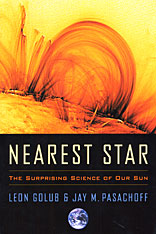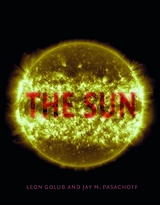
Unlike the myriad points of light we gaze at in the night sky, our nearest star allows us to study the wonders of stellar workings at blindingly close range--from a mere 93 million miles away. And what do we see? In this book, two of the world's leading solar scientists unfold all that history and science--from the first cursory observations to the measurements obtained by the latest state-of-the-art instruments on the ground and in space--have revealed about the Sun. Following the path of science from the very center of this 380,000,000,000,000,000,000-megawatt furnace to its explosive surface, Nearest Star invites readers into an open-ended narrative of discovery about what we know about the Sun and how we have learned it.
How did the Sun evolve, and what will it become? What is the origin of its light and heat? How does solar activity affect the atmospheric conditions that make life on earth possible? These are the questions at the heart of solar physics, and at the center of this book. Having made optical solar observations with many solar telescopes and in the rockets and satellites, the authors bring their extensive personal experience to this story of how astronomers study the Sun, and what they have discovered about phenomena from eclipses to neutrinos, space weather, and global warming. Richly illustrated with an assortment of pictures from the latest solar missions and the newest telescopes, this book is a very readable, up-to-date account of science's encounter with our nearest star.

Leon Golub and Jay M. Pasachoff offer an engaging and informative account of solar science and its history, drawing on centuries of study by solar astronomers who have looked to the Sun not only to learn about our own solar system but also about what lies in the distant wilderness of faintly glimmering stars. They skim along the surface of the Sun, which is decorated with sunspots, discussing these fascinating magnetic aberrations and the roughly eleven-year cycles they abide. They follow seismic waves into the interior of the Sun and its unending nuclear fusion. They show us what is unveiled in solar eclipses and what new views and knowledge our space exploration has afforded us. They brave solar weather, and they trace the arcs of radiation and particles whose effects we can see on earth in phenomena such as the northern and southern lights.
Glowing with a wide assortment of astonishing images, this beautifully illustrated guide will delight everyone, from those who know what a coronagraph is to those who simply like to step out on a bright day, close their eyes, and feel the Sun’s warmth upon their skin.
READERS
Browse our collection.
PUBLISHERS
See BiblioVault's publisher services.
STUDENT SERVICES
Files for college accessibility offices.
UChicago Accessibility Resources
home | accessibility | search | about | contact us
BiblioVault ® 2001 - 2024
The University of Chicago Press









